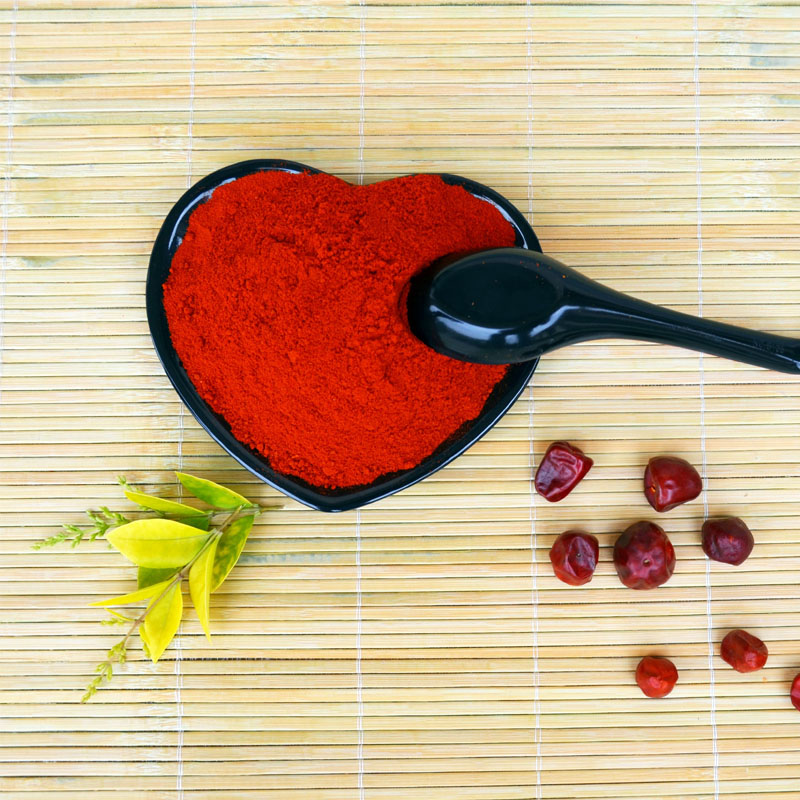- No. 268 Xianghe Street, Economic Development Zone of Xingtai city, Hebei 054001 China
- Byron@hbhongri.cn
ਫਰ. . 10, 2025 23:18
Back to list
Paprika oleoresin
Paprika extract, also known by its European food additive number E160c, is an intriguing natural coloring agent derived from the capsicum peppers. Rich in carotenoids, primarily capsanthin and capsorubin, this extract serves more than just a coloring purpose; it holds the potential for a range of applications within food, cosmetics, and pharmaceuticals.
Authoritativeness in the arena of natural food colorants such as E160c is built on a foundation of scientific research and regulatory compliance. Regulatory bodies like the European Food Safety Authority (EFSA) and the U.S. Food and Drug Administration (FDA) have vetted paprika extract, underscoring its safety for consumption. These endorsements are crucial for building consumer confidence, helping manufacturers assure their customers of the health benefits and safety of their products. Trustworthiness is key when promoting paprika extract in product formulations. Brands that utilize this ingredient must ensure transparency about their sourcing and production processes. Educating consumers on the benefits and origins of the extract can further bolster trust. Sharing information about the ecological considerations of its cultivation, such as sustainable farming practices and fair trade, can position a brand positively in the minds of ethically-minded consumers. In the cosmetic industry, paprika extract is gaining traction not just for its vivid color but also for its skin-beneficial properties. The antioxidant nature of carotenoids may help in protecting the skin from environmental stresses, thus being a valuable ingredient in skincare formulations. This crossover appeal between food and beauty industries amplifies its market potential. Finally, in pharmaceuticals, ongoing research is exploring the potential health benefits stemming from the bioactive compounds in paprika extract. Initial studies indicate promising anti-inflammatory and cell-protective effects, although further research is required to substantiate these claims fully. As the scientific community continues to explore and validate these benefits, paprika extract could secure a significant niche within nutraceuticals. In conclusion, paprika extract E160c stands out not only as a dynamic and natural coloring agent but also as a component with multifaceted applications across industries. Its growing popularity reflects a broader trend towards natural ingredients, yet it is a product whose potential is still being uncovered. Ensuring quality production, understanding its applications, and effectively communicating its benefits will be critical for stakeholders looking to leverage this vibrant extract in their products.

Authoritativeness in the arena of natural food colorants such as E160c is built on a foundation of scientific research and regulatory compliance. Regulatory bodies like the European Food Safety Authority (EFSA) and the U.S. Food and Drug Administration (FDA) have vetted paprika extract, underscoring its safety for consumption. These endorsements are crucial for building consumer confidence, helping manufacturers assure their customers of the health benefits and safety of their products. Trustworthiness is key when promoting paprika extract in product formulations. Brands that utilize this ingredient must ensure transparency about their sourcing and production processes. Educating consumers on the benefits and origins of the extract can further bolster trust. Sharing information about the ecological considerations of its cultivation, such as sustainable farming practices and fair trade, can position a brand positively in the minds of ethically-minded consumers. In the cosmetic industry, paprika extract is gaining traction not just for its vivid color but also for its skin-beneficial properties. The antioxidant nature of carotenoids may help in protecting the skin from environmental stresses, thus being a valuable ingredient in skincare formulations. This crossover appeal between food and beauty industries amplifies its market potential. Finally, in pharmaceuticals, ongoing research is exploring the potential health benefits stemming from the bioactive compounds in paprika extract. Initial studies indicate promising anti-inflammatory and cell-protective effects, although further research is required to substantiate these claims fully. As the scientific community continues to explore and validate these benefits, paprika extract could secure a significant niche within nutraceuticals. In conclusion, paprika extract E160c stands out not only as a dynamic and natural coloring agent but also as a component with multifaceted applications across industries. Its growing popularity reflects a broader trend towards natural ingredients, yet it is a product whose potential is still being uncovered. Ensuring quality production, understanding its applications, and effectively communicating its benefits will be critical for stakeholders looking to leverage this vibrant extract in their products.
Next:
Latest news
-
hongri-no-compromise-turmeric-powder-legacyNewsAug.22,2025
-
luxury-skincares-secret-premium-turmeric-powder-infusionsNewsAug.22,2025
-
oleoresin-capsicum-in-food-hongris-scienceNewsAug.22,2025
-
capsicum-oleoresin-extract-bioactive-paint-preservative-innovationNewsAug.22,2025
-
organic-paprikas-journey-through-hongri-labsNewsAug.22,2025
-
paprika-powder-fueling-miniature-desert-ecosystemsNewsAug.22,2025








